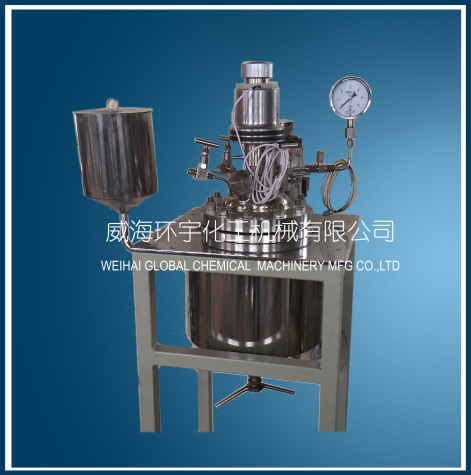
(7x24)
Mob:13061173293
Fax:0631-5766838
Tel:0631-5766938
Address:No.2, South No.1 Road, YangTing Village, HuanCui District

The Harrington alloy reactor in the laboratory is driven by a ring-shaped rare earth permanent magnet agitator with large stirring moment, complete static sealing, no leakage, high temperature resistance, high pressure, high vacuum, high stirring speed, stable operation and low noise. The Harrington alloy reactor in the laboratory has the characteristics of wide application, simple use and easy operation. The Harrington alloy reactor in the laboratory is used for various stirring reactions in the laboratory. The ideal equipment. Laboratory Harrington alloy reactor is suitable for stirring reactions of materials with different viscosities under different reaction conditions, such as gas-liquid reaction, gas-liquid-solid reaction, liquid-solid reaction, etc. The axle sleeve is made of self-lubricating graphite, ceramics, PTFE filled carbon fibers and other materials.
Harrington Alloy Reactor: Harrington Alloy is a kind of nickel-based alloy. At present, it is mainly divided into three series: B, C and G. It is mainly used in iron-based Cr-Ni or Cr-Ni-Mo stainless steel, non-metallic materials and other unusable corrosive media. It has been widely used in petroleum, chemical industry, environmental protection and many other fields abroad.
Characteristic of Hastelloy Reactor:
Harrington B-2 alloy has excellent corrosion resistance in various reducing media. It can resist any temperature and concentration of hydrochloric acid under normal pressure. It has excellent corrosion resistance in non-inflatable medium concentration of non-oxidizing sulfuric acid, various concentrations of phosphoric acid, high temperature acetic acid, formic acid and other organic acids, bromic acid and hydrogen chloride gas. It also resists the corrosion of halogen catalysts. Therefore, Harrington B-2 alloys are usually used in many rigorous petroleum and chemical processes, such as distillation and concentration of hydrochloric acid, alkylation of ethylbenzene and synthesis of acetic acid by low-pressure hydroxyl groups.
 Address:Yujiakuang, Yangting Town, Huancui District, Weihai City, Shandong Province
Address:Yujiakuang, Yangting Town, Huancui District, Weihai City, Shandong Province  Tel:0631-5766828
Tel:0631-5766828 E-Mail:huanyu01@wh-huanyu.com Record No:
E-Mail:huanyu01@wh-huanyu.com Record No: About Us
About Us Product
Product Contact Us
Contact Us scan code
scan code